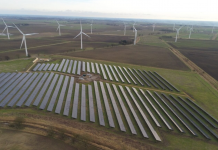Osprey Charging today announces its ambition to make charging anxiety a thing of the past, by installing over 150 high-powered electric vehicle (EV) charging hubs across the UK by 2025.
A total of 1,500 150-175kW rapid chargers will be installed across the sites, which will be located on strategic A-roads and adjacent to motorways, to encourage motorists to switch to electric cars ahead of the 2030 ban on new petrol and diesel cars.
The £75 million rollout will see game-changing new charger optimisation technology deployed publicly for the first time in the UK. Kempower charging technology enables more locations than ever to host multiple rapid chargers on a single site without compromising on charging power or requiring prohibitively expensive grid connections. The technology employs intelligent load balancing to maximise the amount of charge that each vehicle receives. The Kempower technology will complement the Tritium charging hardware also being deployed on new sites by Osprey.
Charging anxiety – the fear of hard to use, unreliable or unavailable charging infrastructure – is a major concern for EV drivers and a key barrier to greater adoption, according to EVA England, the country’s trade body for the EV industry.[1]
Ian Johnston, CEO of Osprey Charging, said, “The EV market is booming, with sales up over 117% year-on-year and EV adoption continuing to grow exponentially. In less than nine years’ time, buying a new petrol or diesel car will be impossible, so it’s crucial that public charging infrastructure stays ahead of the curve.
“High-powered, multi-charger hubs will herald a new era of public EV charging – enabling mass EV adoption and a clean transport revolution.”
Construction is already underway at four sites and Osprey’s first hub will open next month in Wolverhampton, adjacent to the A463 near the M6. Construction will commence on all of the first 10 hubs before the end of the year, with over 150 hubs consisting of 1,500 150-175kW chargers, opening on major transport routes, motorways, A-roads and popular destinations over the next four years.
Each rapid charger is capable of adding 100 miles of range in as little as 10 minutes and each hub will be located near food and drink amenities, allowing drivers to make use of the facilities while they charge their car.
[1] EVA England Consumer Charger Survey Report



